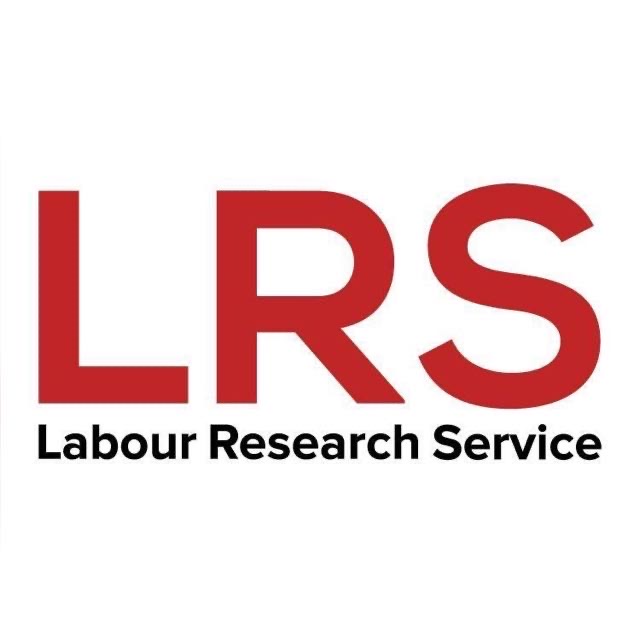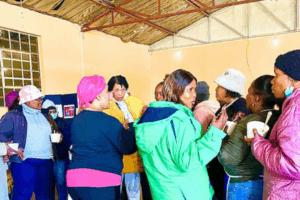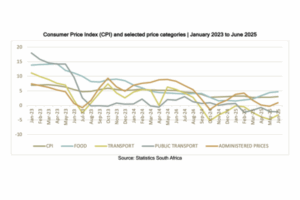The Real Economy Bulletin is a quarterly publication of Trade and Industrial Policy Strategies (TIPS) that examines trends, developments and data in the real economy.
In this issue
Briefing Note: Why inflation targeting doesn’t work in a highly unequal country – The South African Reserve Bank’s inflation targeting approach and its recent 0.5% hike has more than doubled interest rates. The rate is now 8.25% and was 4% in March 2022. In a country of extreme inequality, these hikes have disproportionately affected two groups: those in the top 10% of income earners, who have more than R1 trillion in mortgage debt, and the working poor, who often survive on payroll loans.
GDP growth: The economy grew by 0.4% in the first quarter of 2023, reversing the previous quarter’s decline. However, growth remains slow. In the year to March 2023, the economy grew by only 0.2%. Lower export prices and a pro-cyclical fiscal and monetary policy stance have been exacerbated by load shedding. National electricity generation is now about 25 per cent lower than in 2007.
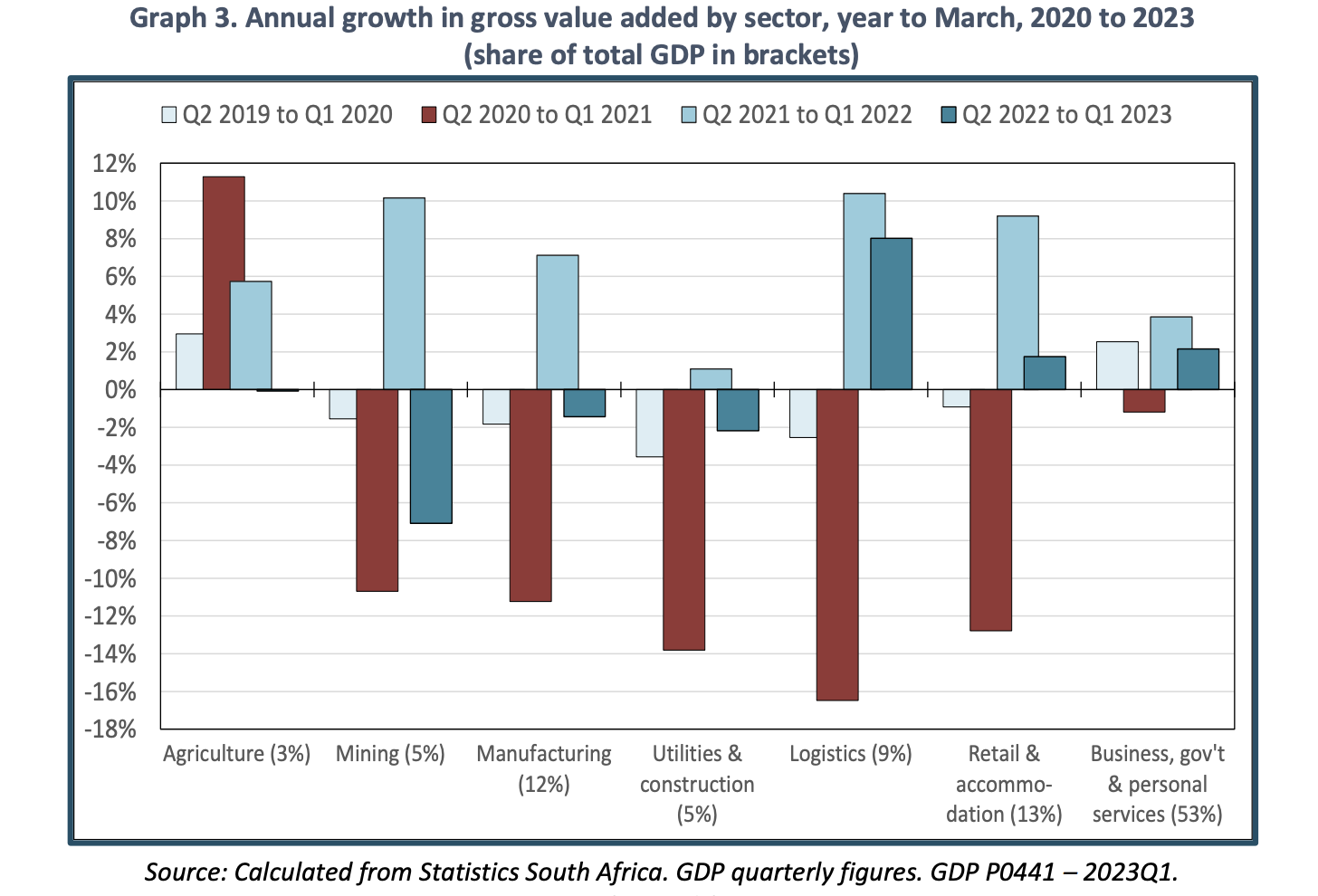
Employment: Total employment remains lower than it was in the first quarter of 2020, before the pandemic lockdown, largely due to an extraordinary contraction in domestic work, as well as a very slow recovery in formal employment, especially for skilled production workers. Nevertheless, for the first time since the pandemic lockdown in 2020, formal employment grew faster than informal employment in the year to the first quarter of 2023. Women have suffered disproportionately from job losses during the pandemic due to the loss of domestic work. In the year to the first quarter of 2023, the manufacturing sector saw significant employment gains in metals, transport equipment and clothing. However, food processing saw job losses.
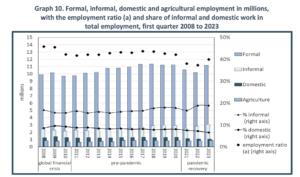
International trade: Falling commodity prices, particularly for coal, and economic growth gradually eroded South Africa’s historically high recent surpluses in the first quarter of 2023, pushing the country into a trade deficit for the first time since the pandemic. The shift to a deficit mostly reflected falling export revenues as global mining prices dropped while imports rose, in large part to develop new electricity capacity.
Investment and profitability: Investment increased by 1.4% in the first quarter of 2023, driven largely by an exceptional 7% jump in government investment for the quarter. The private sector was much more cautious, with investment rising by just 0.2% in the quarter, compared with 1.8% in the fourth quarter of 2022. The investment rate stabilised at 14.8% of GDP. This is down from a peak of 22% in 2008 and unchanged from the previous quarter.
Foreign direct investment projects: Seventeen FDI projects. Eleven projects were recorded at various stages of development in the first quarter of 2023, most of which were greenfield investments. The published investment value for the quarter was about R47,8 billion from three projects in manufacturing, utilities, services, transport, mining and agriculture.

